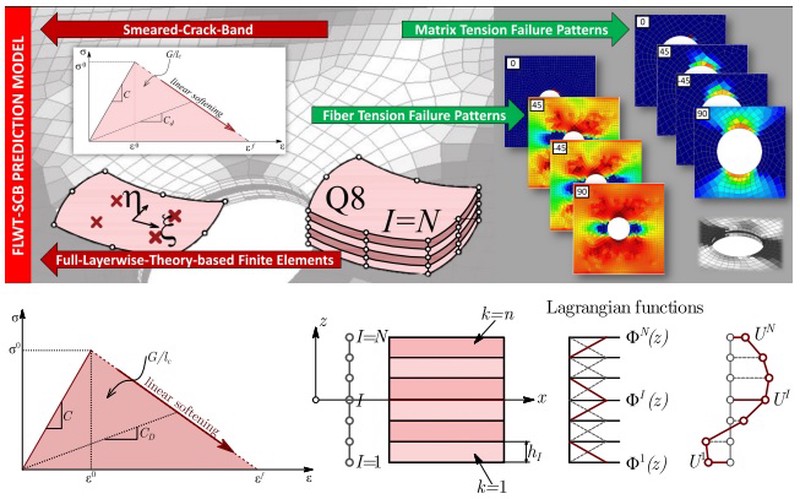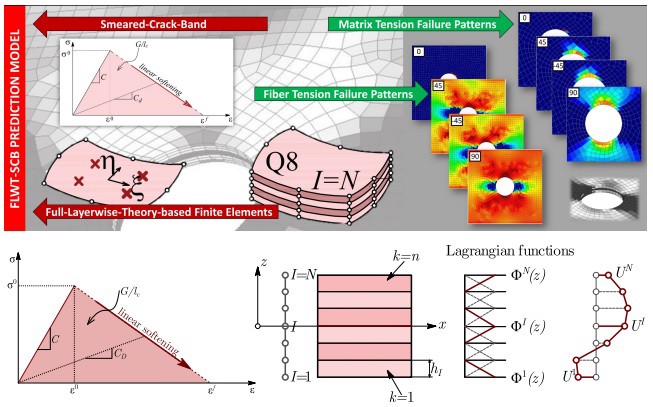
Progressive failure analysis of laminar composites under three-dimensional stress state using layered finite elements
Abstract
Laminar composites are extensively used in civil engendering due to their exceptional strength, stiffness, corrosion resistance, and cost-effectiveness. They are ideal for high-reliability applications. The 21st century’s focus on environmental protection has led to increased use of natural-based materials like cross-laminated timber (CLT) in building construction. CLT panels have a high stiffness-to-weight ratio, making them well-suited as load-bearing elements, such as walls and floors. The optimal design of laminar composites is often hindered by uncertainties in failure prediction and the computational costs associated with progressive failure analysis (PFA), particularly for larger structures. This study introduces a novel prediction model that combines the smeared crack band (SCB) damage model with the full layerwise theory (FLWT). The aim is to enhance the computational efficiency of PFA in laminar composites while maintaining the accuracy of 3D finite element models. The SCB model accurately captures the response of damaged lamina in both fiber and matrix directions using distinct strain-softening curves, ensuring a precise representation of post-failure behaviour. The damage law is derived based on the assumption that the total energy required to cause failure in an element (released strain energy) is equivalent to the energy necessary to create a crack passing through it. To alleviate mesh dependency, the fracture energy is scaled by a characteristic element length. Failure initiation and modes are determined using the Hashin failure criterion. Furthermore, the model is extended to consider different failure behaviour of timber in tension and compression. This extension enhances the computational framework’s applicability to the field of computational mechanics for bio-based composites, such as CLT. The validity of the model is then confirmed through an extensive experimental program carried out at the Faculty of Civil Engineering, University of Belgrade. Application of layered finite elements for continuum damage modelling in laminar composites remains largely unexplored in literature, particularly when combined with the SCB damage model. The FLWT-based model accurately captures the 3D stress state within each lamina, including continuous transverse stresses between adjacent layers, crucial for accurate prediction of failure initiation. Furthermore, the FLWT demonstrates a weak correlation between the size of the considered domain and the mesh, presenting a notable difference from standard finite element models. The developed FLWT-SCB prediction model is integrated into an original FLWTFEM framework, offering a user-friendly graphical environment for easy visualization of input and output data. The proposed model’s efficiency has been verified using numerous benchmark examples during progressive failure analyses of laminar composites and CLT panels with arbitrary geometries, loading and boudary conditions and stacking sequences. The model has demonstrated its accuracy in predicting the response of both intact and damaged laminar composites, and valuable recommendations for future research in this field are included.
